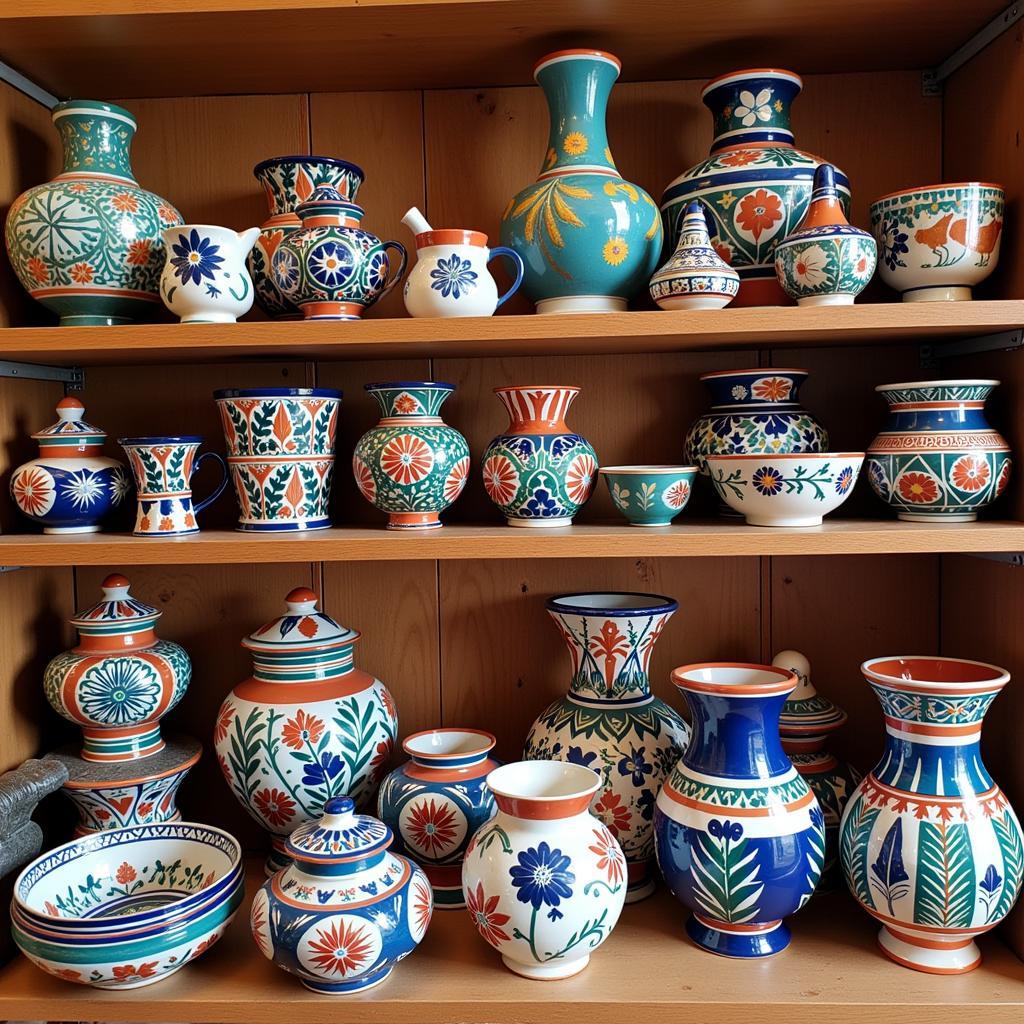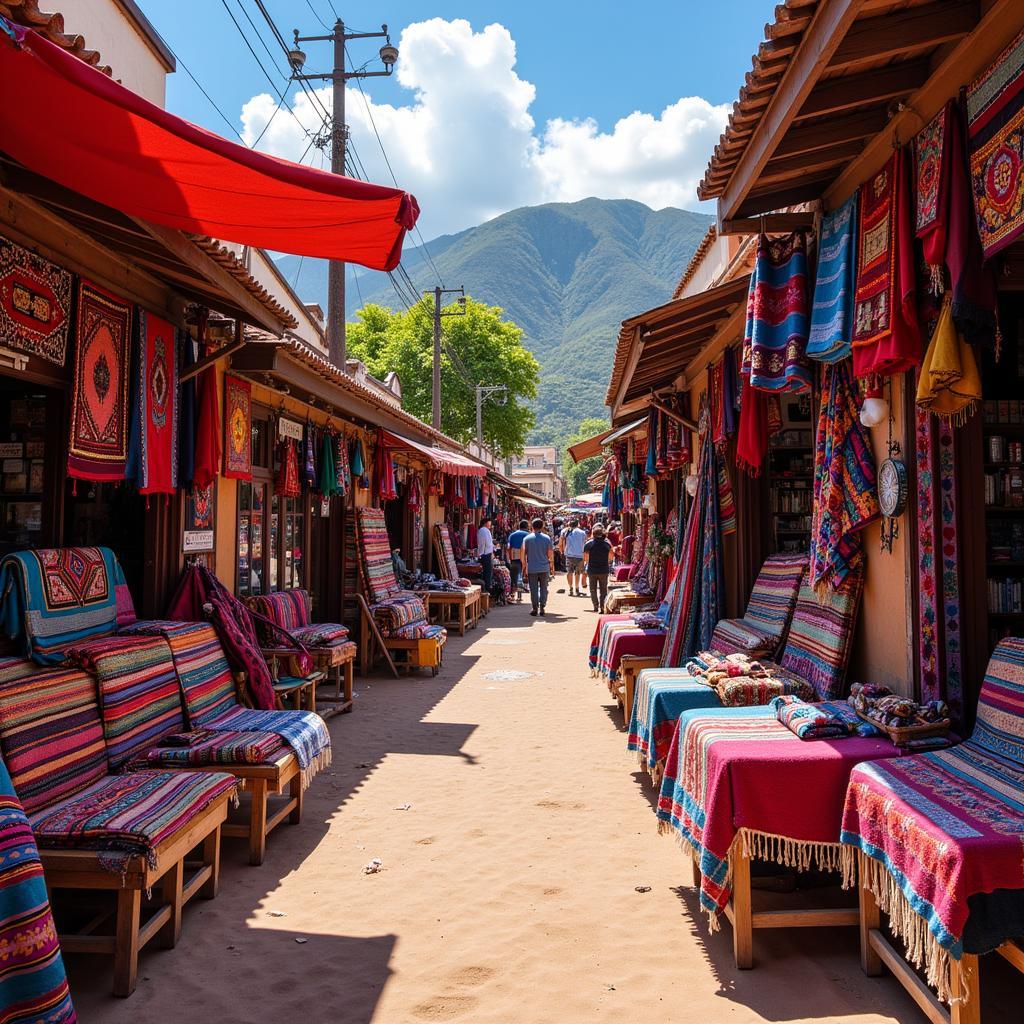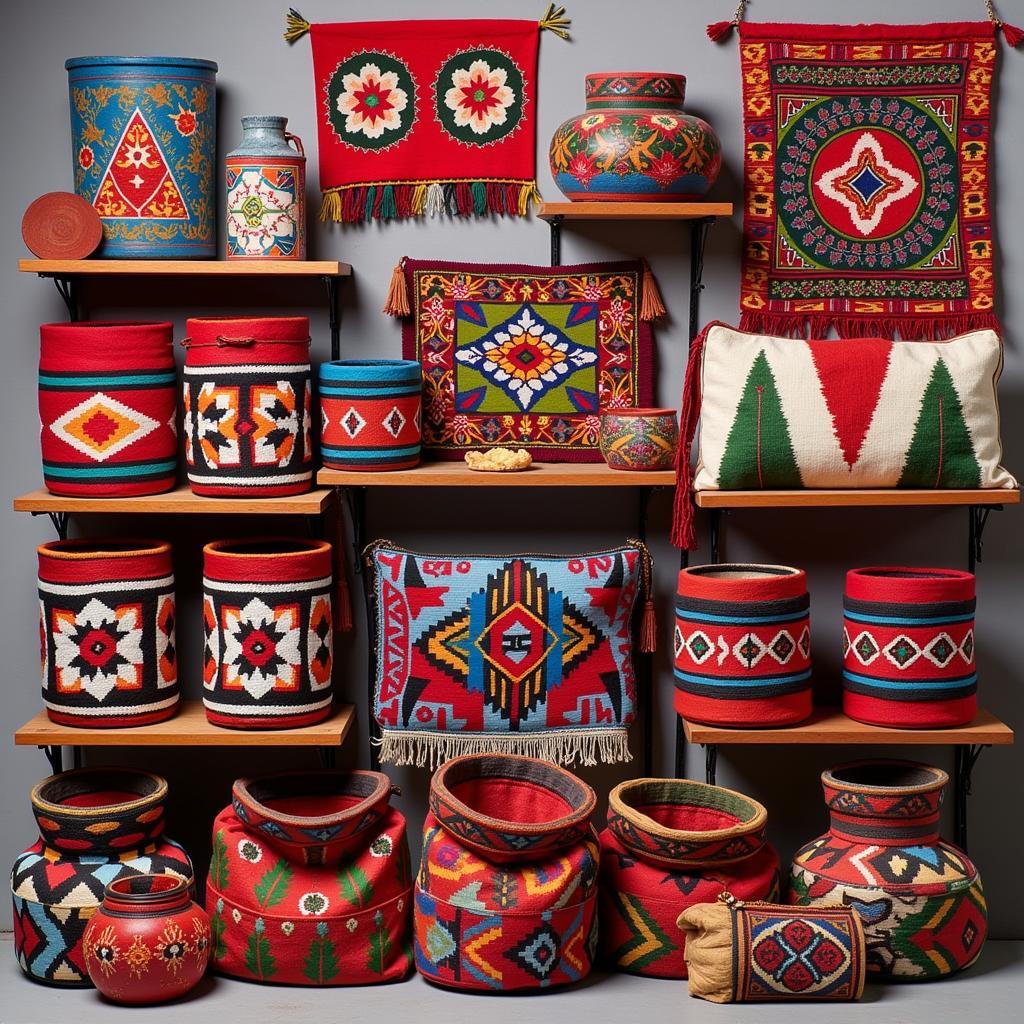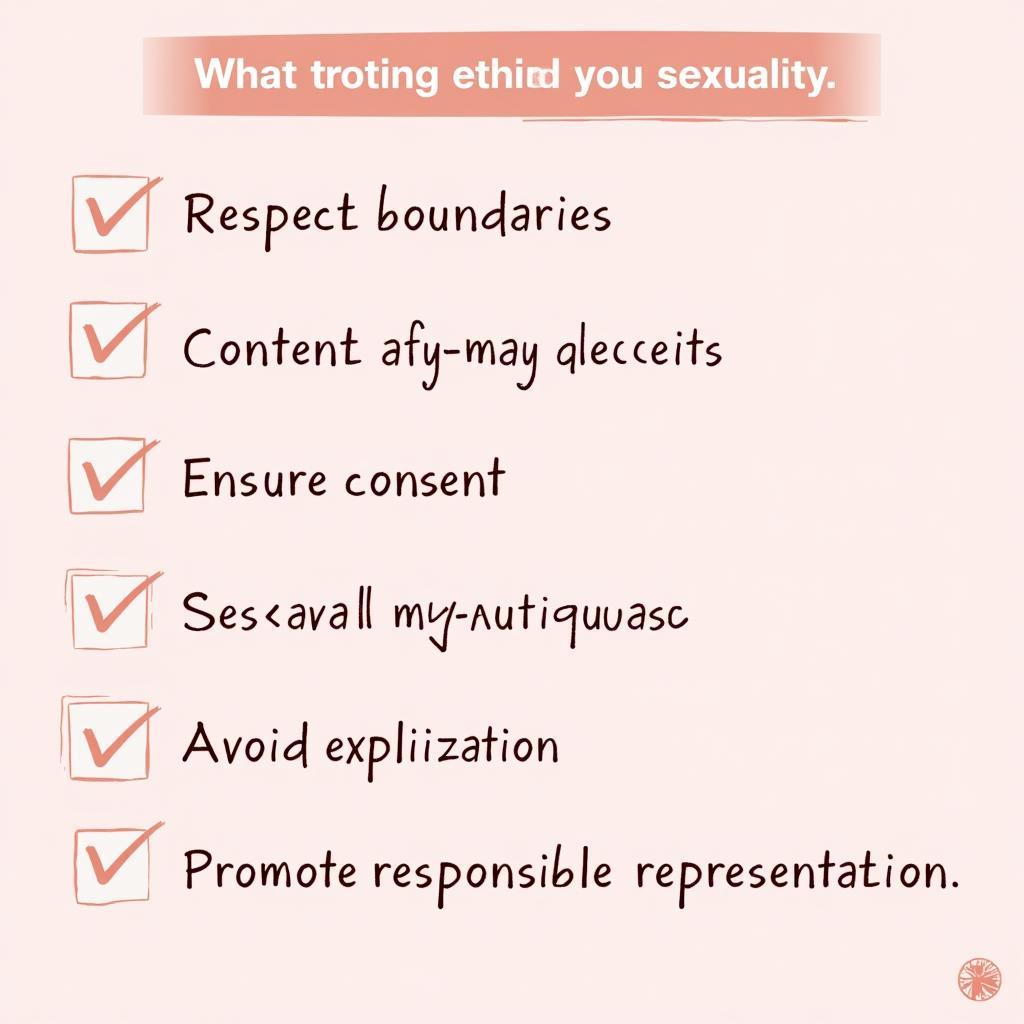A Journey Through Vibrant Traditions: Exploring Latin American Folk Art
Latin American Folk Art is a captivating expression of cultural identity, showcasing the history, beliefs, and daily life of diverse communities across the region. From the vibrant textiles of Guatemala to the intricate ceramics of Mexico, each creation tells a story passed down through generations. This article delves into the heart of these traditions, exploring the significance, symbolism, and techniques that make Latin American folk art so unique.
Unmasking the Soul of a Region: Understanding Latin American Folk Art
Unlike fine art, often confined to galleries and museums, Latin American folk art thrives in everyday life. It’s the pottery used for daily meals, the colorful hammocks swaying in courtyards, and the intricate masks used in traditional ceremonies. These creations are an integral part of the cultural fabric, reflecting the spirit, history, and values of their makers.
 Colorful Mexican Folk Art Ceramics
Colorful Mexican Folk Art Ceramics
A Tapestry of Influences: Tracing the Roots of Latin American Folk Art
The rich heritage of Latin American folk art is woven from a blend of indigenous traditions and influences brought by European colonization. Indigenous artistry, deeply connected to nature and spirituality, is evident in the use of natural materials, symbolic motifs, and vibrant colors. The arrival of Europeans introduced new techniques and styles, resulting in a fascinating fusion that continues to evolve today.
From Andes to Amazon: A Glimpse into Regional Styles
Each region of Latin America boasts distinct styles and techniques, reflecting their unique cultural landscapes:
- Mexico: Known for its vibrant colors and whimsical imagery, Mexican folk art celebrates life and death. From the iconic “Día de Muertos” (Day of the Dead) decorations to the intricate “alebrijes” (mythical creatures), Mexican art bursts with symbolism and storytelling.
- Peru: Textiles reign supreme in Peruvian folk art. Ancient weaving traditions, passed down through generations, create intricate patterns and vibrant colors, often depicting animals, deities, and scenes from daily life.
- Guatemala: Known for its brightly colored textiles, Guatemalan folk art showcases intricate weaving and embroidery techniques. The “huipil,” a traditional blouse worn by indigenous women, is a stunning example, with each region boasting unique designs and patterns.
 Guatemalan Textiles in a Bustling Market
Guatemalan Textiles in a Bustling Market
More Than Meets the Eye: Symbolism and Storytelling in Latin American Folk Art
Beyond their aesthetic appeal, Latin American folk art pieces are imbued with symbolism and meaning. Animals often represent spiritual guides or ancestral spirits, while geometric patterns convey cosmic order or agricultural cycles. By understanding these underlying narratives, we gain a deeper appreciation for the cultural significance embedded within each creation.
“Latin American folk art is a dialogue between the past and the present,” says renowned art historian Dr. Gabriela Sanchez. “It’s a way for communities to preserve their heritage while adapting to the changing world around them.”
Keeping Traditions Alive: The Future of Latin American Folk Art
In an increasingly globalized world, preserving traditional art forms is more crucial than ever. Many Latin American artists are finding innovative ways to adapt their craft to contemporary tastes while staying true to their cultural roots. This fusion of tradition and innovation ensures that these vibrant art forms continue to captivate and inspire future generations.
Conclusion
Latin American folk art is a vibrant tapestry woven from history, culture, and creativity. Each creation offers a window into the soul of a region, inviting us to appreciate the beauty, symbolism, and stories embedded within. By supporting these artists and learning about their traditions, we contribute to the preservation of these invaluable cultural treasures.
FAQs
1. What are some common materials used in Latin American folk art?
Common materials include clay, wood, textiles, natural dyes, and fibers like wool and cotton.
2. Where can I buy authentic Latin American folk art?
You can find authentic pieces at latino art for sale, which supports local artisans.
3. Are there any museums dedicated to Latin American folk art?
Yes, there are several museums worldwide, including the Museum of International Folk Art in Santa Fe, New Mexico, and the Museo de Arte Popular in Mexico City.
 Display of Peruvian Folk Art with Textiles
Display of Peruvian Folk Art with Textiles
4. What is the significance of color in Latin American folk art?
Colors often hold symbolic meanings, with red representing passion, blue symbolizing wisdom, and green signifying nature and fertility.
5. How can I learn more about specific regional styles within Latin American folk art?
Researching specific countries or regions like Mexico, Peru, or Guatemala will reveal the unique characteristics and techniques associated with their folk art traditions.
For inquiries and support, please reach out to us at Phone Number: +842462573573, Email: [email protected], or visit us at Savico Megamall, 7-9 Đ. Nguyễn Văn Linh, Gia Thụy, Long Biên, Hà Nội 10000, Vietnam. We have a dedicated customer support team available 24/7.


